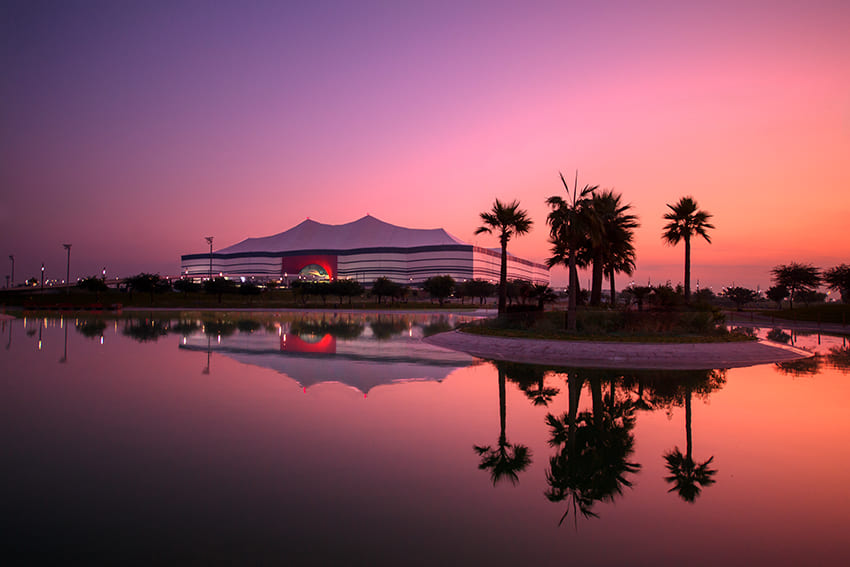It was marked on the calendar as the second match of the FIFA Arab Cup, but the real star of the show was the just-inaugurated Al Bayt Stadium.
The match took place between the Qatari and Bahraini national teams (guests won 1-0) and was attended by the Emir of Qatar, His Highness Sheikh Tamim Bin Hamad Al Thani, who came to Al Khor, 46 kilometers (28.9 miles) from Doha, to be at the opening of the new and innovative stadium, which will host the FIFA World Cup in 2022.
President of FIFA Gianni Infantino was also in attendance. “The Al Bayt is a house where everyone is uniting, where everyone is coming together,” he said at the event. “It is a symbol for what the World Cup represents. The Arab Cup represents today what the World Cup will represent next year — people coming together, people being united from all over the world. So, to have games in such a beautiful stadium, in such a symbolic stadium, is something that we have to cherish and that will be crucial for the success of the World Cup.”
Al Bayt Stadium project: a sustainable stadium for the future of football
The Al Bayt Stadium is a special structure. Its avant-garde, sustainability-centered infrastructures are a reflection of Qatar’s aim to make an impression at the most prestigious event in world football.
Built by the Webuild Group, the stadium has a 60,000-seat capacity and is shaped like a large Qatari tent in the desert, a symbol of hospitality.
Sustainability remains a central issue. To that end, the stadium has earned GSAS 4stars, a mandatory rating in the MENA area, issued by the Gulf Organization for Research & Development (GORD). Its parameters are based on an expansive definition of sustainability. In addition to the traditional energy, efficiency and safety criteria, this rating calls for further action, including the reuse of structures on- or off-site; the development of local resources, especially regarding native flora and fauna conservation; and the development of local resources and economies alongside traditional values of local culture and traditions.
Sustainability, modernity and design merge with traditional culture here. Both the project and its shape are inspired by Qatari hospitality. On a desert plateau, the tent is a refuge from the harshness of the wild. In fact, the stadium stands on ground 14 metres (46 feet) above sea level, and two spotlights shine on it from afar so that everyone can find their way and make themselves at home.
For this reason, too, the atmosphere inside the structure is unique, as confirmed by Nasser Al Khater, CEO of FIFA World Cup Qatar LLC: “The atmosphere at Al Bayt was incredible for the inauguration ceremony and throughout the match,” he said. “It was wonderful to see so much passion for football during this momentous occasion, which offered a glimpse of the World Cup we will host in 2022.”
The details of a unique work
In addition to what’s visible to the naked eye, the structure contains many ‘secret’ tidbits. A techno polymer called PTFE was used for the façade, for example; it had previously been used in the construction of other famous stadiums like the Allianz Arena in Munich and the Maracanã in Rio de Janeiro. Similarly, climatisation has been exacting: ventilation inlets hidden under the seats of the bleachers will create a bubble of cooled air for spectators.
Beyond all these features, the major feature of Al Bayt Stadium is its desire to create a legacy even after the World Cup is over. Like a traditional Arab tent, the stadium is also designed to be partially dismantled and reassembled elsewhere once the event has ended. Its structure is built so that capacity can easily be reduced to 32,000 seats, converting one portion into a hotel, and another to shopping centers and other businesses. The third ring, on the other hand, was designed and built in metal carpentry to be dismantled and donated to developing nations in need of sports infrastructure once the World Cup is over. This way, the spirit that the FIFA President described will be spread where it is needed most.


